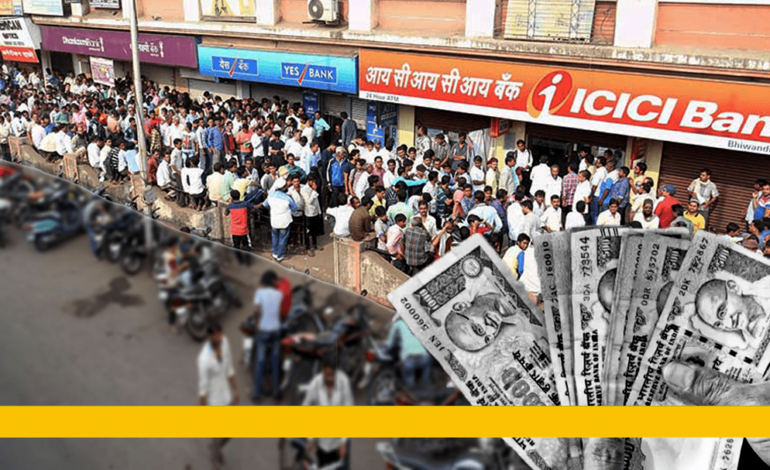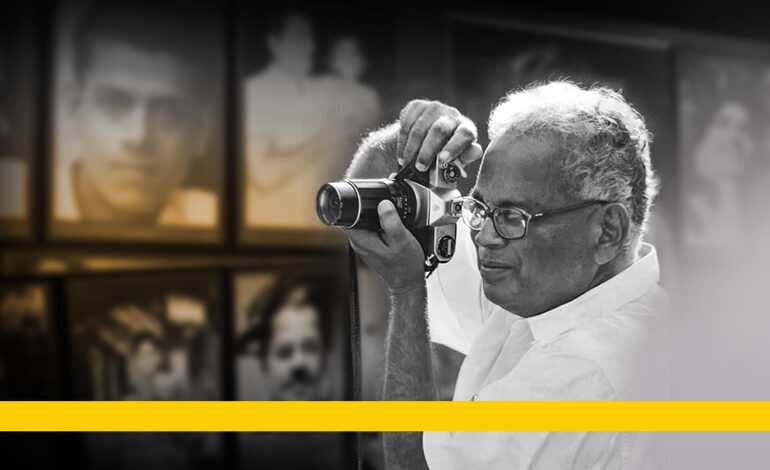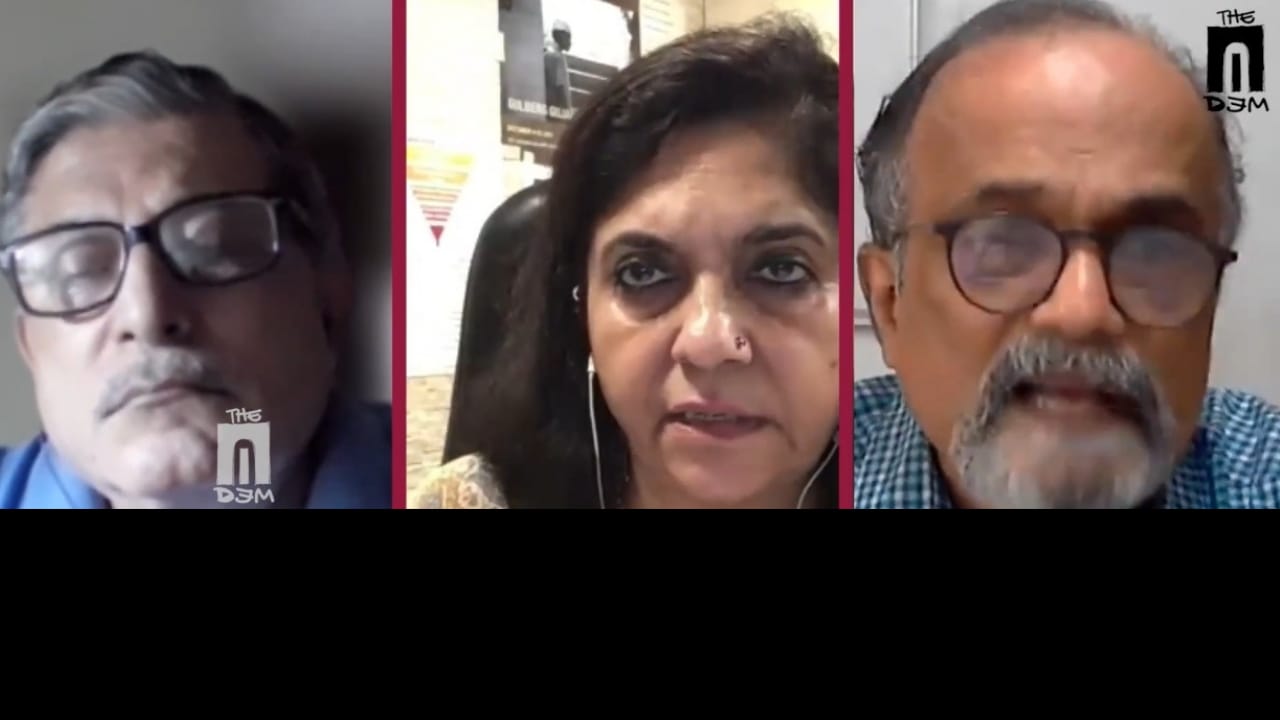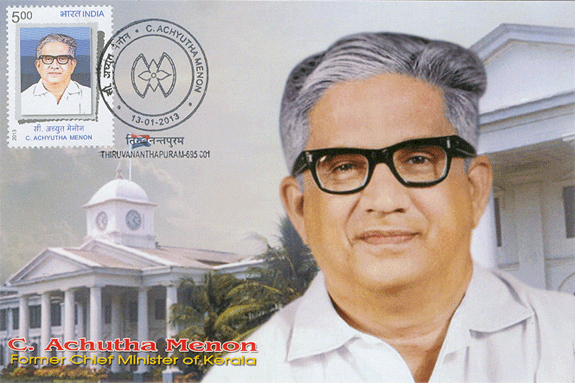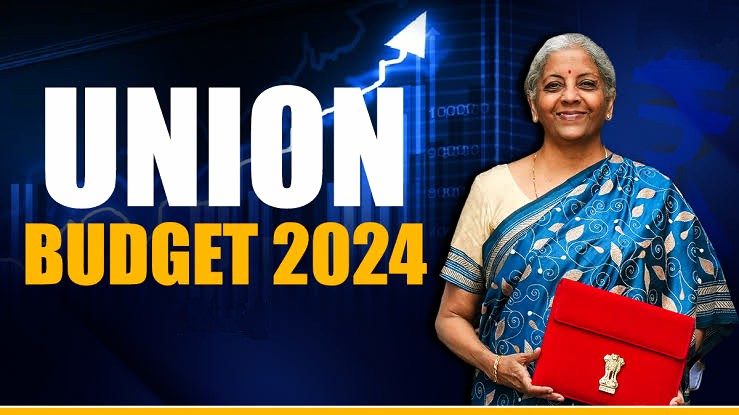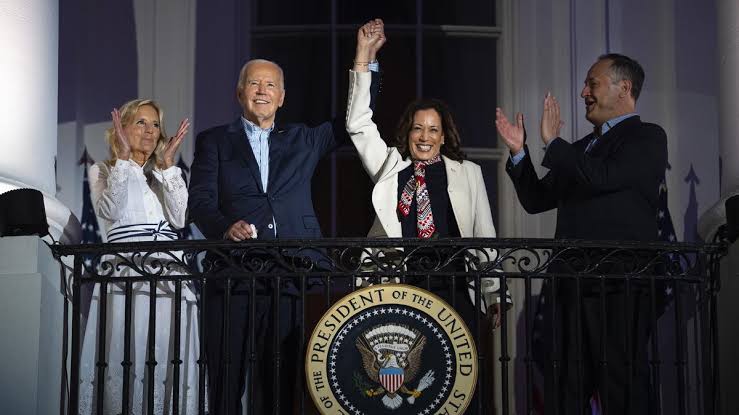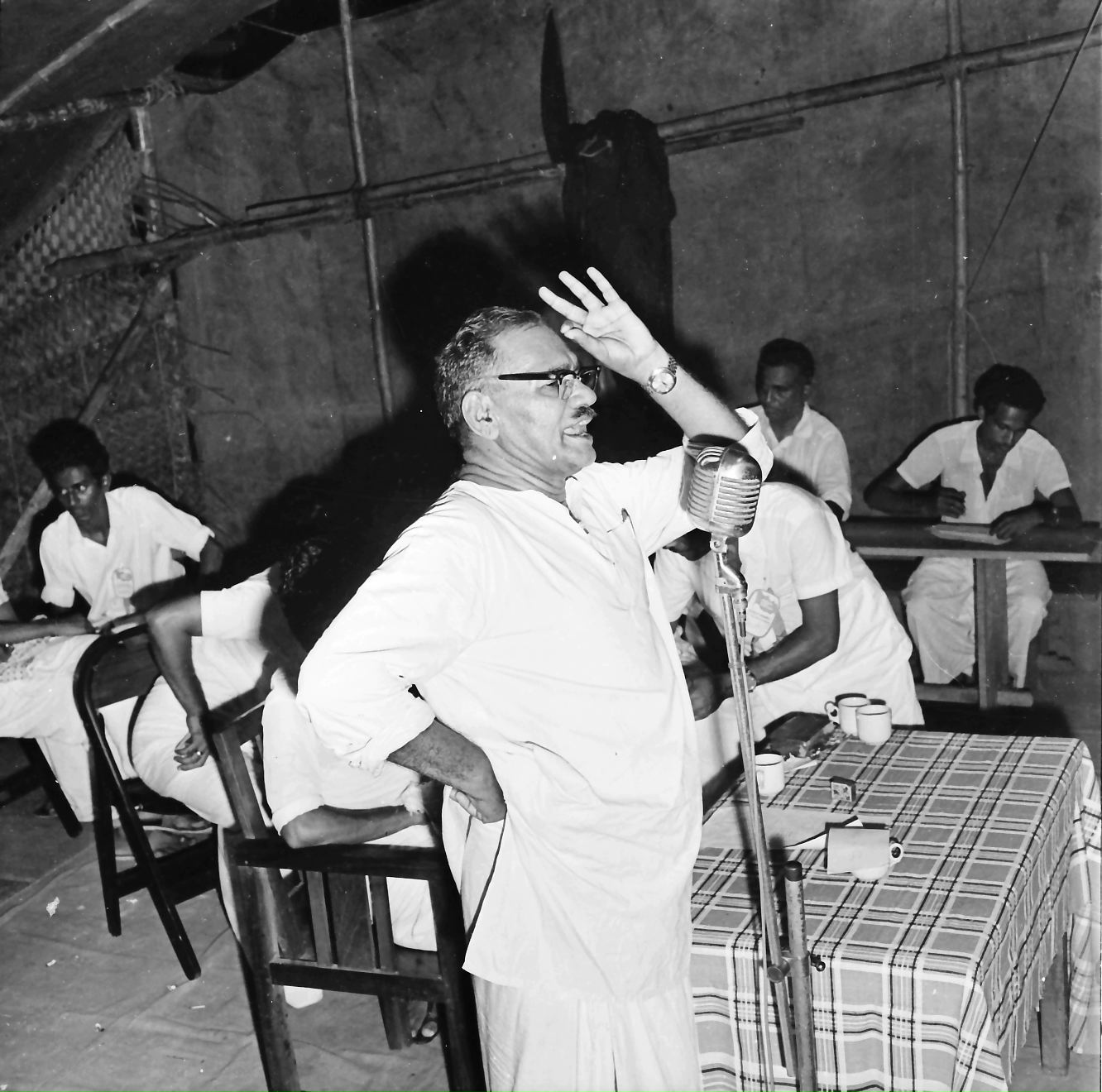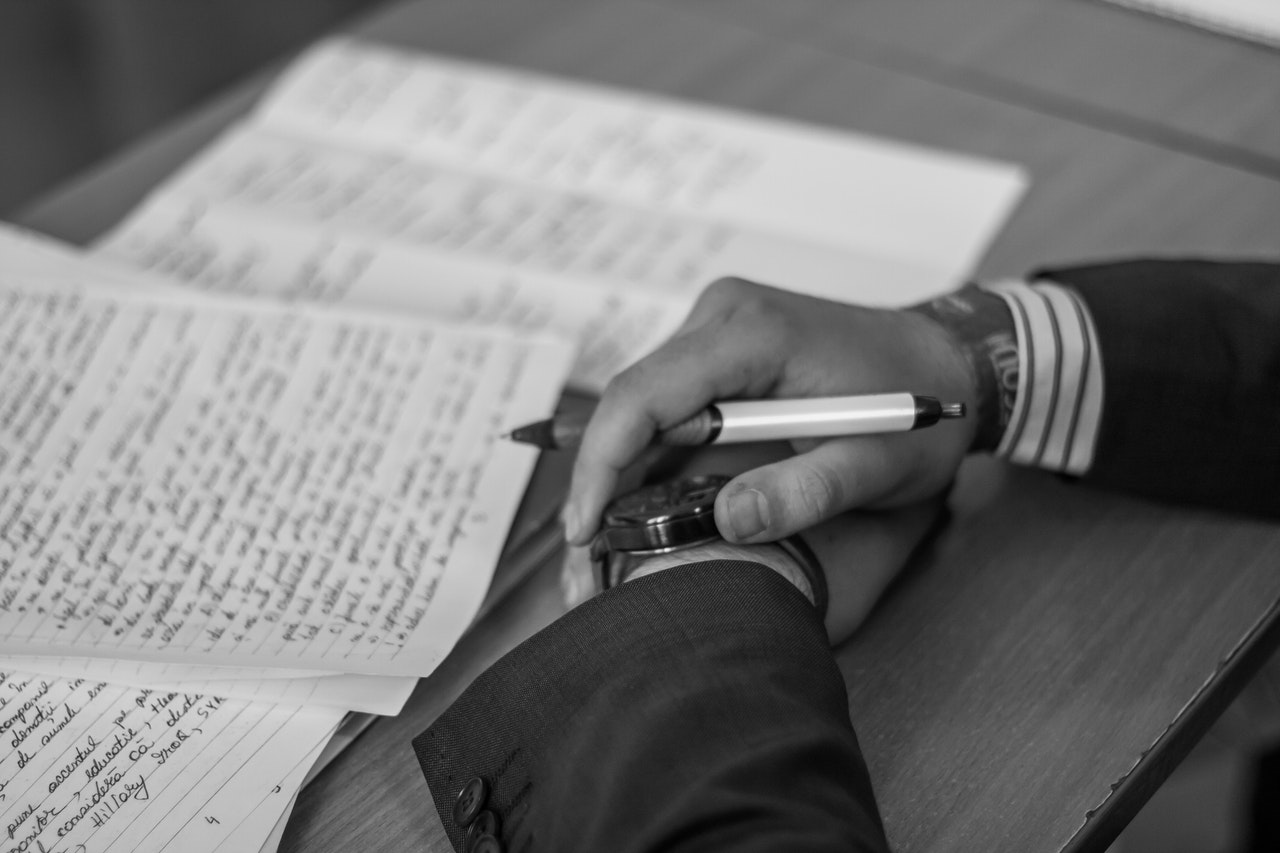Homeless in Prime Minister’s Varanasi…
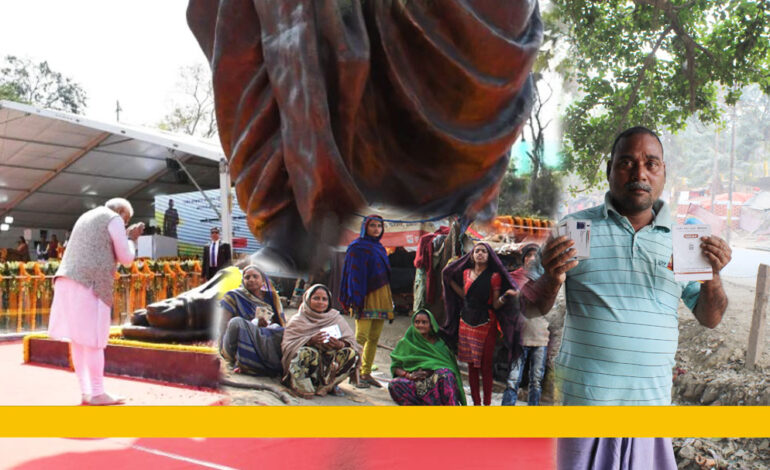
Ear to the Ground is a special feature by The AIDEM that reports on offbeat field reports on people’s lives and livelihood issues.
What happened to Antyodaya when a statue of Deen Dayal Upadhya came up in Varanasi?
The AIDEM Bureau, Lucknow
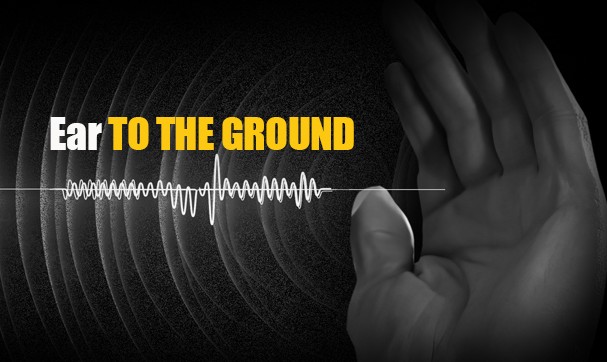
“This land is our destiny. If we can’t live here, we will die here”
“If these do not prove where I am from, what does, what will?” This is the question from Mahendra (56), a displaced person, after producing before the authorities every identification document one can think of – a voter ID card, an Aadhaar card, a PAN card, a ration card and even a bank passbook.
He is one of the 250 others – men, women and children – who were ousted from their hutments at two different junctures, first in February 2020 and again in November 2020. Both the displacements happened some days before Prime Minister Narendra Modi visited Varanasi, his parliamentary constituency.
The first instance was the unveiling of a statue of Deen Dayal Upadhyaya – an ideologue whose philosophies shaped the thoughts of many of the earliest leaders of the Rashtriya Swayamsewak Sangh (RSS), the parent body of the Bharatiya Janata Party (BJP). This was on February 16, 2020.
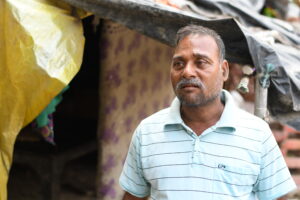
A key element of Upadhyaya’s philosophy was ‘Antyodaya’ – the rise of the last man, the most marginalised. He had reasoned that till the last man standing was not uplifted, poverty and misery would continue to afflict humankind. Mahendra, who belongs to the Dharkar caste, which is listed as a Scheduled Caste in the Census of India, 2011, makes bamboo products such as baskets, ladders and mats for a living. On good days, he earns Rs. 150. He is the kind of man Upadhyaya might have imagined when he expounded his philosophy.
The statue unveiled by Modi was one of the country’s tallest, measuring 63 feet. It stands on Pandit Deen Dayal Upadhyaya Smriti Sthal, a memorial spread over 3.75 acres, on the Padao chauraha (crossroads) off the slope of the Madan Mohan Malviya Bridge (popularly called the Rajghat Bridge). This bridge over the Ganga connects Varanasi to the Mugalsarai Junction – the station at which Upadhyaya’s dead body was found in 1968. From the bridge, constructed in 1887, one can get a majestic view of the expanse of the Ganga.
The hutments, including Mahendra’s, were at a distance of 100 metres from the memorial, and thus were visible from the bridge.
The documents of Mahendra and the others (all of whom use just one name) have Sujabad (spelt as Suzabad on some official documents) at the Kashi Vidyapeeth block as their residential address.
Sometime in November 2019, Mahendra and others had seen the massive statue being hauled to the memorial site through a passage in front of their hutments. They were told that a ‘big function’ was planned and that ‘Modiji’ would visit the place.
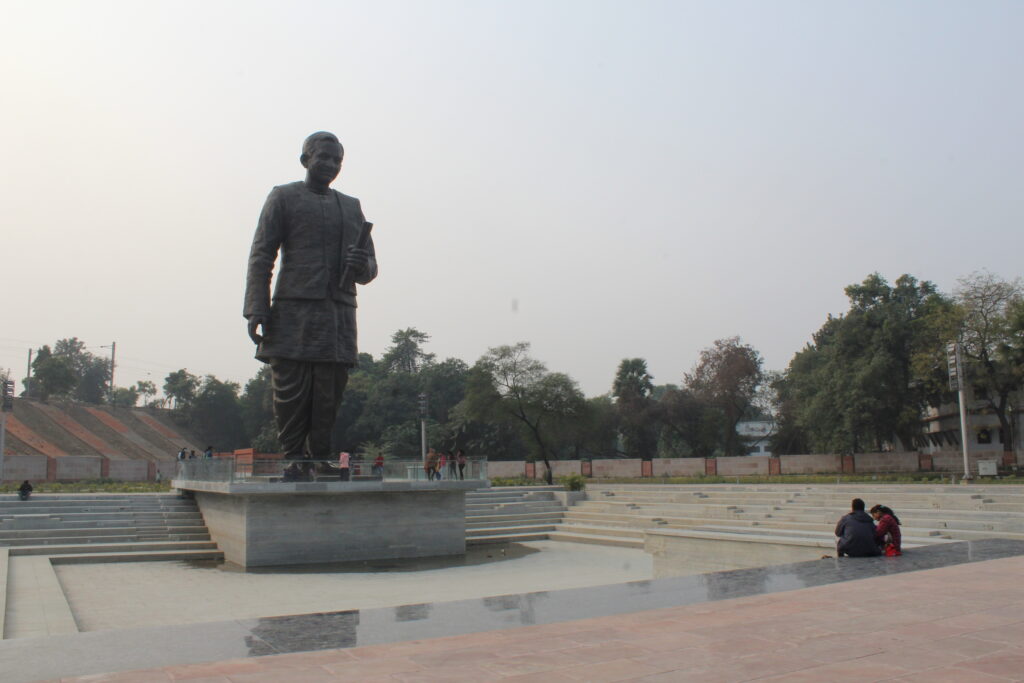
Our MP is PM
Pathru (50), another resident, says he was greatly delighted in the hope that perhaps he too could walk to the nearby memorial to get a glimpse of his leader. He, like everyone else in his area, had voted for Modiji. Reason: “If our MP (Member of Parliament) would be the PM (Prime Minister) we would get all sukh suvidha (comfortable amenities).”
This is Modi’s second term as an MP from Varanasi. He first won the seat in 2014 and his most prominent opponent was Arvind Kejriwal, now Chief Minister. While in the first election he won 56.37 % of the vote, it increased to 63.62 % in 2019.
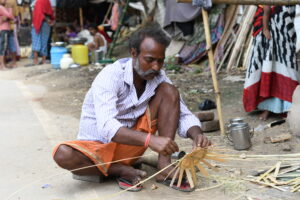
On the list of the MP’s most touted achievements are river cruise boats, inland waterway cargo transport terminals, piped gas supply to households and the widening of the road from the Kashi Vishwanath Temple to the Ganga ghat. The benefits for Sujabad’s poorest are spectacular benefits. In 2019, they got free electricity connections under the Saubhagya Yojana, while some families got cooking gas cylinders.
Unexpected ‘benefit’
At 11AM a few days before the unveiling of the statue, a horde of policemen from the local thana (Police Station) descended upon the 50-odd families that lived on Sujabad’s South West periphery. Their order: “You have four hours. Gather all that you can. Your houses will be broken.”
Reshma (51) remembers shouting, “Where will we go?” and then crumbing into a heap and crying. All that she had ever known in her life happened in that hutment with mud walls and a bamboo roof. Some of her neighbours had homes with brick walls, but she was satisfied with what she had. Her water needs were met by two taps and a hand pump behind the rows of houses. The electricity connection worked. What more could she have asked for?
But within four hours, this very small world of the barest necessities was torn down. Bulldozers were brought in to do the job. And the terrified residents stood on the road that connected the Padao crossing to the Khidkiya Ghat with their belongings. The latter is a pier, which is part of another elaborate showcase development project that is to include a multipurpose giant platform for holding cultural events and a water sports centre.
The ousted families were assured that once the high profile visit (that also saw Home Minister Amit Shah, Uttar Pradesh Chief Minister Yogi Adityanath and Governor Anandiben Patel) was over, they could re-build their huts on the roughly 5,400 square feet of land where they had stood. The displaced people realized later that it was an empty promise.
Violation of Human Rights
Victims’ right against such forced evictions is recognised by numerous international bodies.
The Office of the High Commissioner for Human Rights, United Nations (Resolution 2004/28) defines forced eviction as ‘…the coerced and involuntary removal of persons, families and groups from their homes, lands and communities, whether or not deemed legal under prevailing systems of law, resulting in greater homelessness and inadequate housing and living conditions’.
The same resolution notes, ‘…the practice of forced eviction…constitutes a gross violation of a broad range of human rights, in particular the right to adequate housing’.
The evictees of Sujabad do not see themselves living elsewhere. For three generations, they had lived on that land and customers know where to find them and the bamboo products they make. Their address is thus intimately connected to their livelihood.
The Supreme Court of India in July 1985 (Olga Tellis Ors vs Bombay Municipal Corporation & others) noted: “The right to live and the right to work are integrated and interdependent and, therefore, if a person is deprived of his job as a result of his eviction from a slum or a pavement, his very right to life is put in jeopardy. It is urged that the economic compulsions under which these persons are forced to live in slums or on pavements impart to their occupation the character of a fundamental right”. (Source: https://indiankanoon.org/doc/709776/) After the families were ousted, wires were bound around the remaining patch of land. And to ensure that no one stepped into those premises under the pretext of getting water, the taps too were razed.
Sold to a private party
The one man whom they hoped would help them in their hour of predicament was Benarsi Lal, the Pradhaan (Headman) of their locality.
Lal (whose term ended in December 2020) says, “The land immediately behind the huts had been sold fraudulently to a private party some years ago. It was government land but the deal was executed on a stamp paper.” He adds that while many of those who were ousted were residents of Sujabad, others had come in from neighbouring districts. “This is valuable land, so close to the city”, he says. “Why would anyone want to leave it and live elsewhere?”
Pathru says that the pradhan had said, “You are not residents of Sujabad. I asked him then why he had come asking us for votes. And if we were not residents, how did we vote?”.
After the eviction, the families spent some nights by the end slope of the bridge – opposite what were once their homes. In time, they strung together tattered plastic bags, old tarpaulin sheets, sacks, sarees and dupattas to build some semblance of shelters for themselves. The little privacy that they had enjoyed in their erstwhile homes was completely gone because on one side of their new ‘habitat’ lay the road from Padao to the ghat and, on the other, the slope coming off the Rajghat bridge. Water was a problem and they had to depend on the goodwill of their erstwhile neighbours to hand out pipes connected to taps for some buckets of water.
“There is just enough water to cook once a day. We bathe once every four-five days. The clothes are washed once a week”, says Jira (37).
By the time these erstwhile Sujabad residents had restored some normalcy in their lives, the Covid-induced lockdown had been announced. There were greater concerns to address.
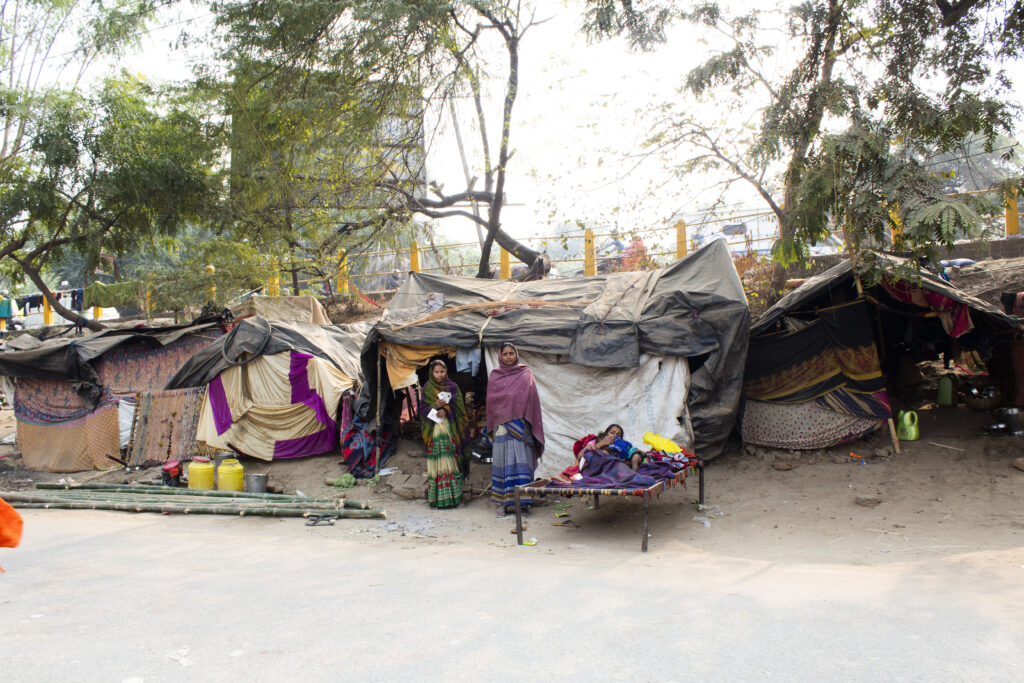
Helping hand
The plight of the evicted families was first noticed by the volunteers of the Innervoice Foundation – a civil society group which was distributing rations and other essentials in the area (and other areas in Varanasi, Chandauli and Allahabad) during the lockdown.
Saurabh Singh, the chief functionary of the organization, said that numerous attempts had been made since then to ask the administration and the government for rehabilitation.
The first e-mail was sent to the District Magistrate (DM) of Varanasi on October 4, 2020; followed by a complaint to the Prime Minister’s Office and then another to the DM on December 12.
The complaint sent to the Prime Minister’s Office (Registration Number: PMOPG/E/2020/0896792), said, ‘It is with immense urgency that we request and pray that… the local administration to pay heed to these voiceless people. Help us put a roof over these families by rehabilitating them via PM Awas Yojana or any other suitable scheme..’. On October 13, six days after the complaint was made it was marked as ‘Closed’ on the PMO website. (Incidentally, U.P. bagged the first prize under the PM Awas Yojana, 2019 for providing houses to the urban poor)
On November 3, the team sent a follow-up email to the officer in the U.P. Chief Minister’s office requesting that a roof be put over their heads before the winter intensified. ‘They have Aadhar, voter ID cards but they belong to nowhere…’ read the email.
On November 11, Sujabad’s residents along with the Innervoice Foundation’s volunteers handed over a letter to the Sub-divisional Magistrate (SDM) pointing out that ‘…women and girls find it extremely difficult to survive by the roads as there are concerns about sanitation, access to safe drinking water, and any other form of civic amenities..safety and security are another crucial matter of concern…they are facing a crisis of homelessness and livelihood losses’.
As the SDM had given the delegation an appointment for 9.45 a.m. on that day, they reached his office at 9.30 a.m. But he did not turn up at his office until 12.30 p.m, nor did he take any phone calls from them after that.
Modi’s second coming & Second eviction
Then, the Prime Minister paid another visit to his constituency on November 30th, 2020.
Though the memorial was not on the list of places he was scheduled to visit, the local police descended at Sujabad again six days prior to his arrival and pulled down the rudimentary settlements that had been rebuilt.
“Run away from here or we will hit you with sticks,” said the police. Says Jira: “I am sure Modiji did not say this, but the police used his visit to harass us.” After the first eviction, she was forced to quickly marry off her daughter Sundari, who had just turned 18. Jira says that the decision, fuelled by a concern for her daughter’s safety, was made in haste and the boy had lied about having a house of his own before the marriage which took place on February 26 – the birth anniversary of Upadhyaya.
The troubles of Sujabad’s residents were reported in the local and national media. This brought local officials to the site, with blankets for just 12 (of the 250) people and assured them that they would receive letters for land possession within two days. They did not specify where this land would be.
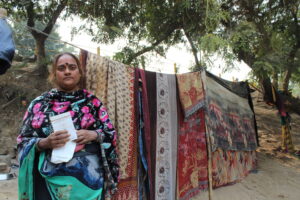
Saurabh Singh says, “Around 10PM on the night of November 29, a battery of officials including, police, the SDM and the tehsildar arrived at site where shanties were broken. They took these people under the Rajghat bridge and guarded them without offering them food and water for the next 24 days until the Prime Minister’s visit was over. At 5AM on November 30th, they were set free”.
Throughout this ordeal, the food packets arranged by Innervoice Foundation for three days (November 28-30) also could not reach them as the Rajghat bridge, where they were imprisoned, was out of bounds for laypersons as it was close to the helipad where the Prime Minister landed.
On December 24, once again a delegation from Sujabad and Innervoice visited the office of the Divisional Commissioner with an application, which pointed out that despite 23 days after the promise of the administration about alternate site for their accommodation, there was no progress. One person, the application pointed out, had since died in the cold. (This was Mahendra’s father, Shyamlal)
This letter triggered the filing of a formal complaint on the district’s integrated grievance redress system. It was forwarded to the Municipal Corporation. After a few days, its status was listed as ‘closed’. More letters to the Prime Ministe, the Chief Secretary and the District Magistrate did not evoke any response.
Bharat Kumar, the naib tehsildar (Land Revenue Officer) who is in-charge of Sujabad says, “I cannot say whether these people will get land or homes. Or maybe nothing because there are lakhs of such homeless people in Varanasi”.
Saurabh Singh says: “The administration has been completely insensitive. There is no action on the matter till date. We contacted everyone including the Prime Minister’s Office, U.P.’s Chief Secretary, Varanasi’s District and the Divisional Commissioner, and the concerned SDM. They did not meet us despite giving us time. The authorities called us to them at very short notice fully aware that we would not be able to reach them. The matter is only marked from one office to another without any outcome. At every level they write ‘resolved’ or ‘closed’.”
Meanwhile Innervoice supplies ration kits to these residents, and the district administration distribute rations occasionally. But there are no masks to be seen. And in the acute shortage of water, handwashing is hardly practiced.
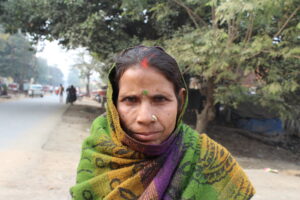
Sujabad’s troubles have been complicated by the fact that its status was changed from a village to an urban area in January 2021.
Saurabh Kumar says:,“Nobody is quite sure how the file should move”.
However, Mahendra and the others assert that the land their ancestors had lived on is theirs. “This land is our destiny. If we can’t live here, we will die here,” says Mahendra.
As for the memorial – where for a Rs. 10 ticket one can spend three hours – no one from among the oustees has visited so far.
Tara (51) says, “The statue is not living. But because of it, even we are dead”.
Subscribe to our channels on YouTube & WhatsApp


